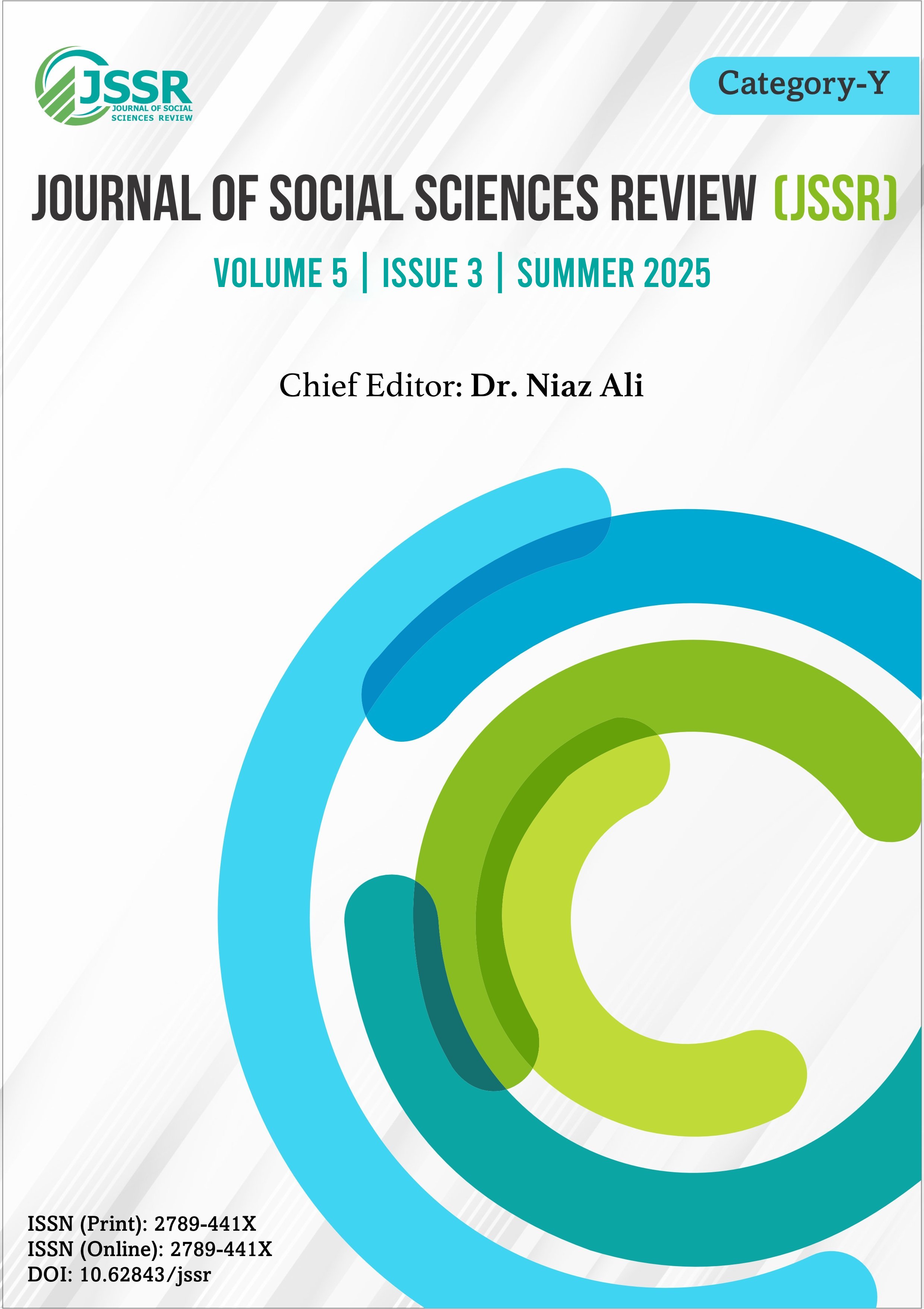Competitive Leadership as a Catalyst for Development and Transformation
DOI:
https://doi.org/10.62843/jssr.v5i3.567Keywords:
Competitive Leadership, Catalyst, Development, Transformation, Leadership StylesAbstract
“A leader is, who leads at the front and change the fate of the nation”.
Leadership in any circumstance i.e. organizational, political, social and economic is a concentrate able term to understand its application and how it motivate and bring transformation at subordinate level and team members to achieve set common goals. Leadership style adoption varies from situation to situation and may also vary in regional settings and values. In this qualitative study, it is strive to understand the approaches of leadership application, styles and their impact on nation’s development. Through, thorough analysis of cited literature, the base hypothesis are accepted and some suggestions are offered as the study is only limited for Pakistan region.
References
Mirakhor, A., & Askari, H. (2017). Ideal Islamic economy: an introduction. Springer.
Alamdar, S. H. (2014). Radiance in Vicegerency . Bloomington : Authorhouse .
Avolio, B. J., & Bass, B. M. (2004). Multifactor leadership questionnaire (TM). Mind Garden, Inc. Menlo Park, CA, 1-10.
Avolio, B. J., Walumbwa, F. O., & Weber, T. J. (2009). Leadership: Current theories, research, and future directions. Annual review of psychology, 60(1), 421-449. https://doi.org/10.1146/annurev.psych.60.110707.163621
Bass, B. M., & Bass Bernard, M. (1985). Leadership and performance beyond expectations (Vol. 25, No. 3, pp. 481-484). New York: Free press.
Bass, B. M. (2006). Transformational Leadership. Lawrence Erlbaum Associates.
Blanchard, K. H. (1982). Management of Organizational Behavior: Utilizing Human Resources. Prentice Hall.
Bukhari, I. M. (n.d.). Sahih Bukhari . Karachi : Darussalam Publishers.
Collins, J. (2001). Good to Great: why some companies make the leap... and others dont. Language, 12(300p), 24cm.
Goleman, D. (2017). Leadership that gets results. In Leadership perspectives (pp. 85-96). Routledge.
Greenleaf, R. K. (1970). The Servant as Leader. Center for Applied Studies.
Hackman, J. R., & Wageman, R. (2005). A theory of team coaching. Academy of management review, 30(2), 269-287.
Jago, A. (2012). Leadership Styles . In M. W. Guah, Handbook of Research on Characteristic of Innate Leaderships .
Judge, T. A., & Piccolo, R. F. (2004). Transformational and transactional leadership: a meta-analytic test of their relative validity. Journal of applied psychology, 89(5), 755.
Kasir, A. H. (1987). Tarikh Ibn Kasir . Karachi: Malik Nafis Academy .
Kotter, J. P. (1996). Leading Change. Harvard Business Review Press.
Kouzes, J. M., & Posner, B. (2012). The leadership challenge: How to make extraordinary things happen. Atlanta, GA: Better World Books.
Lakhani, A. M., Shah-Kazemi, R., & Lewisohn, L. (2006). The sacred foundations of justice in Islam: The teachings of ʻAlī ibn Abī Ṭālib. World Wisdom, Inc.
Modoodi, M. S. (1966). Khilafat wa Malookiat. Lahore: Institute of Translation of Quran.
Northouse, P. G. (2018). Leadership: Theory and Practice. Sage Publications.
Reshahari, M. (n.d.). Imam Ali The Book of Government. https://www.al-islam.org/imam-ali-ass-book-government-ayatullah-muhammadi-rayshahri/chapter-three-administrative-policies
Rigio, B. &. (2006). Transformational leadership . (2nd ed.). Mahwah, NJ: Lawrence Erlbaum Associates.
Schein, E. H. (2010). Organizational culture and leadership (Vol. 2). John Wiley & Sons.
Guah, M. W. (Ed.). (2021). Handbook of Research on Innate Leadership Characteristics and Examinations of Successful First-Time Leaders. IGI Global.
Wang, G., Oh, I. S., Courtright, S. H., & Colbert, A. E. (2011). Transformational leadership and performance across criteria and levels: A meta-analytic review of 25 years of research. Group & organization management, 36(2), 223-270.
Downloads
Published
Issue
Section
License
Copyright (c) 2025 Copyright in the Journal of Social Sciences Review is retained by the author(s). Authors also grant any third party the right to use the article freely as long as its integrity is maintained and its original authors, citation details and publisher are identified.

This work is licensed under a Creative Commons Attribution-NonCommercial 4.0 International License.
SSR's Editorial Board shares the vision of providing free access to information, education, and science for everyone, thus promoting its content through an OPEN ACCESS POLICY, fulfilling the DOAJ definition of open access. The JSSR adheres to an Open Access and Copyright Licensing Policy based on the belief that making research freely accessible to the public promotes greater global knowledge sharing.
The JSSR uses the Creative Commons Attribution-NonCommercial 4.0 International License. The authors who apply and publish in JSSR consent to abide by the copyright policy set out in the Creative Commons 4.0 license (Attribution-NonCommercial 4.0 International license).
- Copyright in the Journal of Social Sciences Review is retained by the author(s).
- Authors also grant any third party the right to use the article freely as long as its integrity is maintained and its original authors, citation details and publisher are identified.
While "By 'open access' to this literature, we mean its free availability on the public internet, permitting any users to read, download, copy, distribute, print, search, or link to the full texts of these articles, crawl them for indexing, pass them as data to software, or use them for any other lawful purpose, without financial, legal, or technical barriers other than those inseparable from gaining access to the internet itself."



